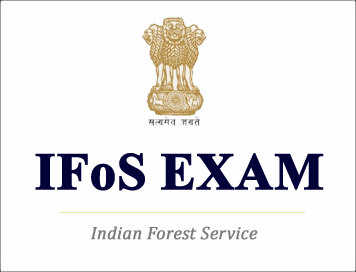(HOT) UPSC Current Affairs 2025 PDF
NEW! The Gist (NOV-2025) | E-BOOKS
(Download) UPSC IFoS (Main) Exam Paper 2020 "Forestry"- I

(Download) UPSC IFoS (Main) Exam Paper-2020 "Forestry"- I
Exam Name: IFoS (Main) Exam
Exam Year: 2020
Subject: "Forestry"- I
'SECTION-A'
1. Answer the following :
(a) Define silviculture. Relate the applications of silviculture to different branches of Forestry.
(b) Frost resistance in trees depends on the internal and external factors. Explain.
(c) Explain the factors which affect the length of regeneration period in a periodic block.
(d) Write the adaptive characteristics of plant species of cold desert.
(e) Describe the methods of artificial regeneration of Tamarindus indica.
2. (a) Describe the following terms :
(i) Dominant
(ii) Dominated
(iii) Crop height
(iv) Top height
(v) Hardening
(b) Describe the reforestation techniques of mangrove forests. Explain the following mangrove habitats :
(i) Deltaic mangrove habitat
(ii) Coastal mangrove habitat
(c) Give a brief account of the silvicultural characters and regeneration methods for the following species :
(i) Acacia catechu
(ii) Populus deltoides
3. (a) Define afforestation. Discuss in brief the afforestation techniques, including the choice of species, for ravine lands.
(b) Define coppice with standard system. What are the advantages and disadvantages? Differentiate it from coppice with two-rotation system.
(c) Write down the presowing seed treatments for the following tree species :
(i) Tectona grandis
(ii) Santalum album
(iii) Dalbergia sissoo
(iv) Albizia lebbeck
(v) Acacia nilotica
4. (a) In India, large tracts of mixed even or uneven aged forests have been degraded due to biotic interference. Suggest the method and measures to improve their condition and composition.
(b) Enumerate the objectives of management of canal plantations. Explain the silvicultural systems to manage them.
(c) Describe the various causes of degradation of mangrove forests. Discuss the factors responsible for mangrove species regeneration and growth. Write the scientific names of five woody shrubs/tree species of cold desert.
'SECTION- B'
5. Answer the following:
(a) What is meant by accompanied and unaccompanied clonal seed orchards? Why are the gains from the two types so different?
(b) “Agroforestry system conserves soil and moisture.” Justify the statement.
(c) What are the roles of forest in watershed management?
(d) Write the tangible and intangible benefits of agroforestry.
(e) Describe the in situ biodiversity conservation with reference to Biosphere Reserves.
6. (a) What do you mean by population diversity? What are the different methods to measure biodiversity?
(b) "Taungya cultivation is a type of traditional agroforestry system.” Justify the statement.
(c) What are the different factors governing the successful introduction of an exotic tree species?
7. (a) Describe the advantages, peculiar problems and various steps in tree improvement.
(b) What are the different soil types found in India? Identify five tree species growing each in Alluvial soils, Red soils, Black cotton soils and Arid and desert soils.
(c) Write the scientific names of any five multipurpose tree species suitable for agroforestry system in (i) Arid and Semi-arid and (ii) Sub-tropical Hills of India.
8. (a) What are orthodox and recalcitrant seeds? Give five examples for each of these categories of seeds.
(b) Explain the methodology for Environmental Impact Assessment.
(c) Write short notes on the following :
(i) Soil texture and structure
(ii) Soil organic matter
(iii) Carbon-nitrogen ratio
(Ebook) Download IFoS Previous Year Papers e-Book
Study Kit for Indian Forest Service (IFoS) Prelims
Printed Study Material for IAS Exam (UPSC) (Combo)
<<Go Back To Main Page
Courtesy : UPSC


